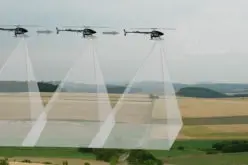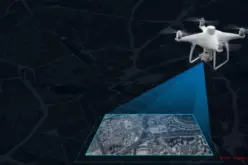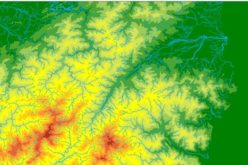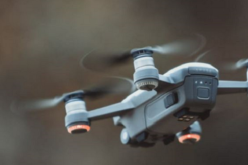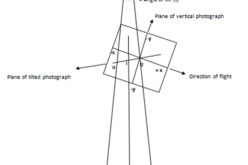American Society of Photogrammetry and Remote Sensing: Call for Papers on Hyperspectral Remote Sensing

Call for Papers: Hyperspectral Remote Sensing of Vegetation and Agricultural Crops
 Hyperspectral remote sensing is fast emerging as a key technology for advanced and improved understanding, classification, modeling, monitoring, and mapping of complex terrestrial vegetation and agricultural crops. The advent of hyperspectral sensors or imaging spectroscopy (e.g., NASA’s Hyperion, ESA’s PROBA, and upcoming Italy’s ASI’s Prisma, Germany’s DLR’s EnMAP, Japanese HIUSI, NASA’s HyspIRI) as well as the advancements in processing large volumes of data have further generated tremendous interest in expanding the hyperspectral applications’ knowledge base over large areas including the entire globe as envisaged in Hyperspectral Infrared Imager (HyspIRI) mission and, potentially, even in the future Landsats (e.g., Landsat-9 may have a Hyperspectral sensor). Even though many advances have been made (see recent book on “Hyperspectral Remote Sensing of Vegetation” by edited Thenkabail, Lyon, and Huete; published by Taylor and Francis) knowledge-gap in our understanding, classification, modeling, monitoring, and mapping of vegetation and agricultural crops using hyperspectral narrowbands (HNBs) and\or hyperspectral vegetation indices (HVIs) continues to be quite high. For example, at present substantial uncertainties exist in the selection of optimized HNBs and HVIs as a result of the lack of integrated global studies that take into consideration: (a) wide array of forest species in range of environments; (b) agricultural crops grown in distinct agroecosystems, (c) large number of crops that occupy overwhelming proportion of cropland areas, and (d) robust models developed based on diverse representative areas, wide array of crops, and numerous biophysical and biochemical characteristics. Further, we expect substantial new and enhanced knowledge by using hyperspectral thermal infrared bands (HTIRBs) in addition to HNBs and HVIs.
Hyperspectral remote sensing is fast emerging as a key technology for advanced and improved understanding, classification, modeling, monitoring, and mapping of complex terrestrial vegetation and agricultural crops. The advent of hyperspectral sensors or imaging spectroscopy (e.g., NASA’s Hyperion, ESA’s PROBA, and upcoming Italy’s ASI’s Prisma, Germany’s DLR’s EnMAP, Japanese HIUSI, NASA’s HyspIRI) as well as the advancements in processing large volumes of data have further generated tremendous interest in expanding the hyperspectral applications’ knowledge base over large areas including the entire globe as envisaged in Hyperspectral Infrared Imager (HyspIRI) mission and, potentially, even in the future Landsats (e.g., Landsat-9 may have a Hyperspectral sensor). Even though many advances have been made (see recent book on “Hyperspectral Remote Sensing of Vegetation” by edited Thenkabail, Lyon, and Huete; published by Taylor and Francis) knowledge-gap in our understanding, classification, modeling, monitoring, and mapping of vegetation and agricultural crops using hyperspectral narrowbands (HNBs) and\or hyperspectral vegetation indices (HVIs) continues to be quite high. For example, at present substantial uncertainties exist in the selection of optimized HNBs and HVIs as a result of the lack of integrated global studies that take into consideration: (a) wide array of forest species in range of environments; (b) agricultural crops grown in distinct agroecosystems, (c) large number of crops that occupy overwhelming proportion of cropland areas, and (d) robust models developed based on diverse representative areas, wide array of crops, and numerous biophysical and biochemical characteristics. Further, we expect substantial new and enhanced knowledge by using hyperspectral thermal infrared bands (HTIRBs) in addition to HNBs and HVIs.
The goal of this special issue is to seek papers on wide array of topics that contribute to advancement of knowledge in use of hyperspectral remote sensing studies of terrestrial vegetation and agricultural crops.
Papers on following topics are of particular interest:
1. Overcoming Hughes phenomenon (or the curse of high dimensionality) and identifying data redundancy of hyperspectral data by detecting and eliminating redundant bands through unique data mining techniques;
2. Development and establishment of optimized hyperspectral-narrowband (HNBs), and Vegetation indices (HVIs) for specific biophysical and biochemical characterization;
3. Classification of complex vegetation and crop types\species using HNBs and HVIs and compare them with the performance of multispectral broadband data;
4. Whole spectral analysis (e.g., continuous spectra over 400– 13,000 nm) for advancement in our understanding and modeling of vegetation\crop structure, phenology, and quantity;
5. Strengths and limitations in use of: A. Optimal number of narrowbands (e.g., removing redundant bands) versus B. Whole spectral analysis (e.g., using continuum removal); to best characterize, classify, quantify, discriminate, and model vegetation\ crop biophysical and biochemical quantities of vegetation\crops;
6. Spectral libraries of vegetation\crops and their role in advancement in our understanding of vegetation\crop characterization;
7. Other methodological advances in hyperspectral data analysis and modeling for vegetation and agricultural crops. Other innovative topics are equally welcome. Papers are welcome to use hyperspectral data from any platform (e.g., spaceborne, airborne, ground based). Papers of high societal benefit (e.g., food security, crop and water productivity, biomass\carbon modeling) and scientific missions (e.g., contributing to HyspIRI mission) are of particular interest. Studies can be local, regional, or global. All studies must address accuracies\errors\uncertainties.
All submissions will be peer-reviewed in line with PE&RS policy. Because of page limits, not all submissions recommended for acceptance by the review panel may be included in the special issue. Under this circumstance, the guest editors will select the most relevant papers for inclusion in the special issue. Authors must prepare manuscripts according to the PE&RS Instructions to Authors, published in each issue of PE&RS and also available on the ASPRS web site at Instructions to Authors.
Deadline for submission of manuscripts: October 1, 2013
Tentative publication date: August 1, 2014
Important Dates
Manuscripts due: October 1, 2013
Decision to Authors: January 1, 2014
Final papers due: February 1, 2014
Publication: August 1, 2014
Please submit your manuscript by email directly to the Guest Editor
Dr. Prasad S. Thenkabail, Research Geographer
U.S. Geological Survey, Flagstaff, AZ 86001, USA
Email: pthenkabail@usgs.gov; thenkabail@gmail.com
Tel.: 928-556-7221; FAX: 928-556-7169



